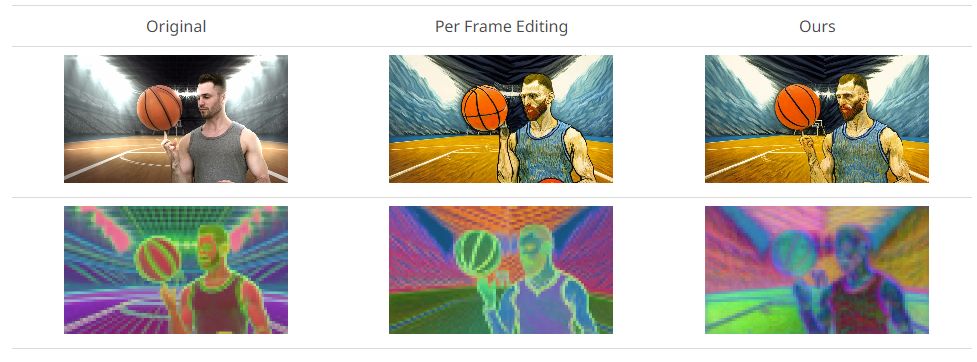Utilizing a text-to-image diffusion model, TokenFlow offers users the opportunity to edit source videos based on specific text prompts. The result? A refined video output that not only aligns with the input text prompt but also retains the original video’s spatial configuration and motion dynamics. This achievement is grounded in TokenFlow’s principal observation: to maintain consistency in the edited video, it’s imperative to enforce consistency within the diffusion feature space.

The method TokenFlow employs is both unique and efficient. Instead of relying on extensive training or adjustments, the framework leverages diffusion features derived from inter-frame correspondences inherent in the model. This capability allows TokenFlow to align seamlessly with pre-existing text-to-image editing techniques.
A deeper dive into TokenFlow’s methodology reveals its adeptness at maintaining temporal consistency. The framework observes that a video’s temporal consistency is intrinsically linked to its feature representation’s temporal consistency. Traditional methods, when editing videos frame by frame, can often disrupt this natural feature consistency. TokenFlow, however, ensures that this consistency remains unaffected.

At the heart of this process is TokenFlow’s method of achieving a temporally-consistent edit. It does so by emphasizing uniformity within the internal diffusion features across different frames during the editing progression. This is facilitated by the propagation of a selected set of edited features across frames, using connections between the original video features.
The process unfolds as follows:
- For an input video, each frame is inverted to extract its tokens, essentially the output features from self-attention modules.
- Inter-frame feature correspondences are then derived using a nearest-neighbor search.
- During denoising, keyframes from the video undergo joint editing via an extended-attention block, leading to the creation of the edited tokens.
- These edited tokens are then disseminated across the video, in line with the pre-established correspondences of the original video features.
It’s noteworthy that TokenFlow’s approach comes at a time when the generative AI sector is witnessing a shift towards video. The framework, with its focus on preserving the spatial and motion aspects of input videos while ensuring consistent editing, sets a new standard. Moreover, by eliminating the need for training or fine-tuning, TokenFlow proves its adaptability and potential to work in harmony with other text-to-image editing tools. This capability has been further exemplified through TokenFlow’s superior editing outcomes on a diverse range of real-world video content.
Source: mPost





